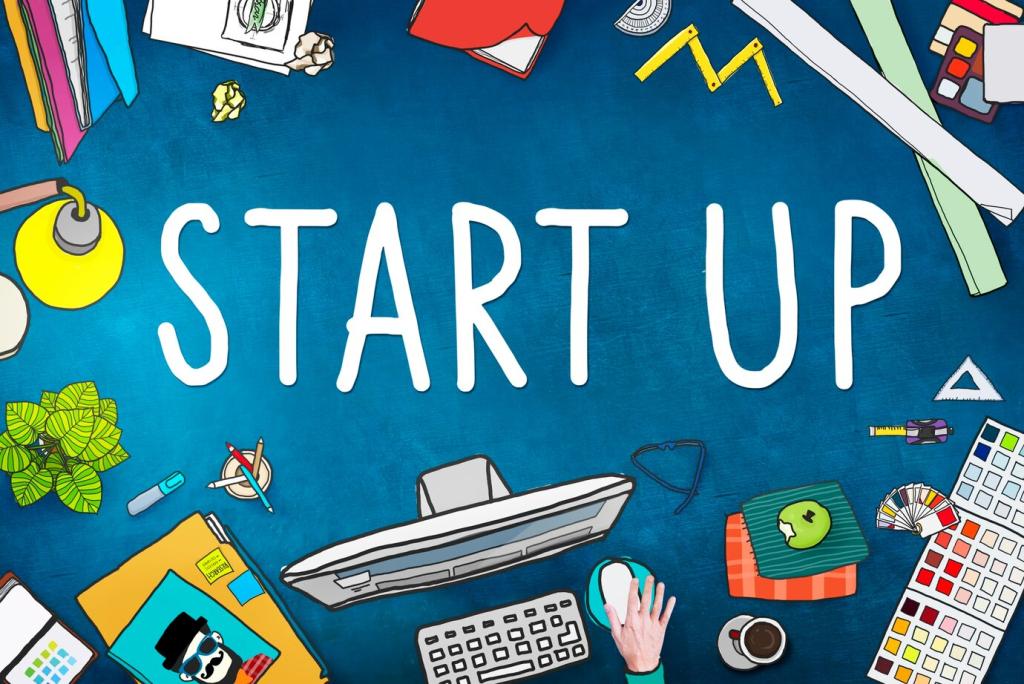
Building a Business Plan: A Beginner's Guide
Chosen theme: Building a Business Plan: A Beginner’s Guide. Welcome—this is your friendly starting point for turning a spark of an idea into a practical, confidence-boosting plan. Read on, ask questions in the comments, and subscribe for simple worksheets and weekly prompts.
Why Your Business Plan Matters Right Now
A clear business plan prevents decision fatigue by aligning choices with your vision, market, and money. When uncertainty hits, you can revisit assumptions, adjust targets, and avoid costly detours. Tell us which decision feels foggy right now.


Crafting a Memorable Vision Statement
Great visions are vivid and short enough to repeat. Picture your customer’s better future because your product exists. Avoid jargon and timelines here; keep it inspiring. What sentence would you proudly print on your wall for daily focus?

Turning Mission into Measurable Objectives
Your mission explains what you do, for whom, and how. Convert it into SMART objectives like first 100 customers, 40% repeat rate, or 3-month payback on ads. Choose three priorities; say no to the rest until achieved.

A Starter Story: The Weekend Baker
A home baker wrote one page: serve busy parents healthy treats before school. She set three goals—preorders by Sunday, delivery windows, and five testimonials monthly. In three months, her clarity doubled sales without a single extra recipe.

This is the heading
Lorem ipsum dolor sit amet, consectetur adipiscing elit. Ut elit tellus, luctus nec ullamcorper mattis, pulvinar dapibus leo.

This is the heading
Lorem ipsum dolor sit amet, consectetur adipiscing elit. Ut elit tellus, luctus nec ullamcorper mattis, pulvinar dapibus leo.

Choosing a Business Model and Revenue Streams
State customer, problem, solution, and outcome in plain language. Example: We help freelancers track invoices automatically so they get paid faster with fewer awkward reminders. If you cannot say it simply, revisit your research and trim jargon.
Choosing a Business Model and Revenue Streams
Anchor price to delivered value. Test tiers or bundles that match willingness to pay. Start with a hypothesis, then validate through small offers and interviews. Track conversion, refund reasons, and upgrade paths to refine confidently over time.
Designing Your First Conversion Funnel
Sketch a path: awareness, interest, trial, purchase, repeat. Choose one channel to test, one message to prove, and one metric to optimize. Start small with weekly experiments and capture learnings in your plan’s notes section.
Content That Educates and Converts
Teach what your customer cares about. Use their words from interviews. Offer a checklist or calculator as a lead magnet. Consistency beats virality; schedule two helpful pieces weekly, then measure sign-ups and replies rather than likes.
Early Traction Metrics That Matter
Track signal over vanity: email replies, demo requests, trial-to-paid, and retention at thirty and ninety days. Celebrate small wins publicly to build momentum and accountability. Which one metric will you report to yourself every Friday?
Operations, Team, and Simple Processes
From Idea to Repeatable Workflow
Document your core steps from order to delivery. Time each step and note blockers. Automate only after you prove consistency. A basic checklist can raise quality dramatically for early teams and reduce stress during busy weeks.


Roles, Responsibilities, and Hand-offs
Even a two-person startup benefits from clear ownership. Define who decides, who executes, and when to escalate. Specify response times and definitions of done. Better hand-offs shorten cycle times and prevent customer promises from slipping.
Financial Basics: Projections Without Panic
Startup Costs and Breakeven Point
List one-time costs, monthly fixed costs, and variable costs per unit. Estimate contribution margin and calculate units to breakeven. This simple math reveals your runway and pricing flexibility. Update assumptions monthly as real data arrives.
Cash Flow That Keeps You Sleeping
Revenue can grow while cash shrinks. Forecast inflows and outflows weekly. Shorten payment terms, invoice promptly, and keep a modest buffer. A cash dashboard in your plan prevents surprises and builds lender trust when opportunity knocks.
A Beginner-Friendly Funding Plan
Decide whether to bootstrap, borrow, or seek investors based on runway and growth goals. Document use of funds by milestone, not by vague categories. Investors respect clarity; you will respect yourself for spending with purpose.
Risk, Milestones, and Continuous Improvement
Naming Risks Reduces Their Power
List top uncertainties like acquisition cost, supplier reliability, or regulatory changes. Pair each with a mitigation step and an early warning metric. Review monthly so surprises become signals you recognized and prepared for in advance.
Milestones That Motivate Progress
Turn dreams into checkpoints: prototype by week four, first ten paying customers by week eight, referral program by week twelve. Tie each milestone to one owner and one measurable outcome. Celebrate publicly to sustain momentum.
The One-Page Update Habit
Every two weeks, summarize wins, misses, learnings, and next bets on a single page. Send it to mentors or peers for feedback. This rhythm keeps your plan relevant and invites support exactly when you need it most.
